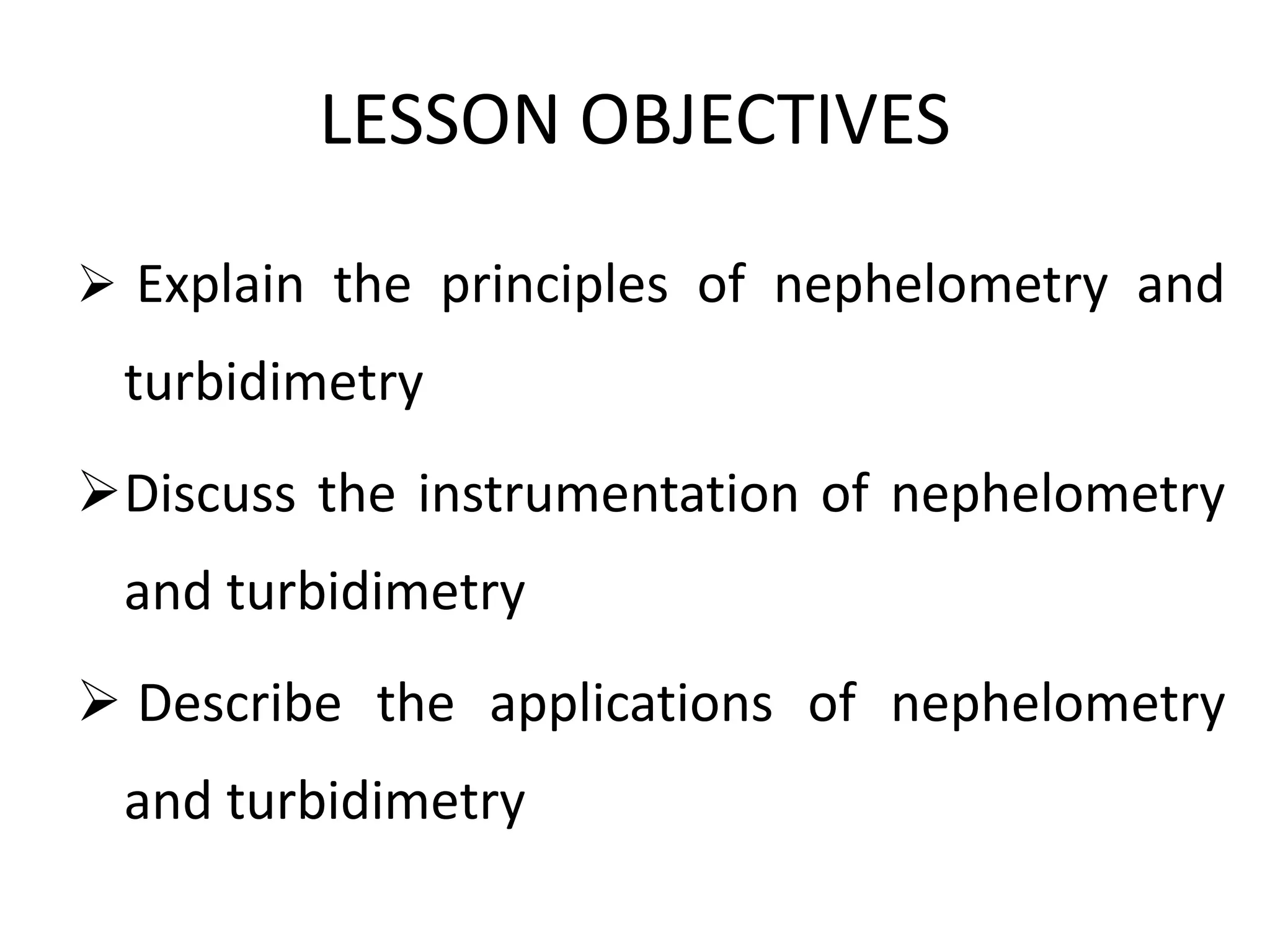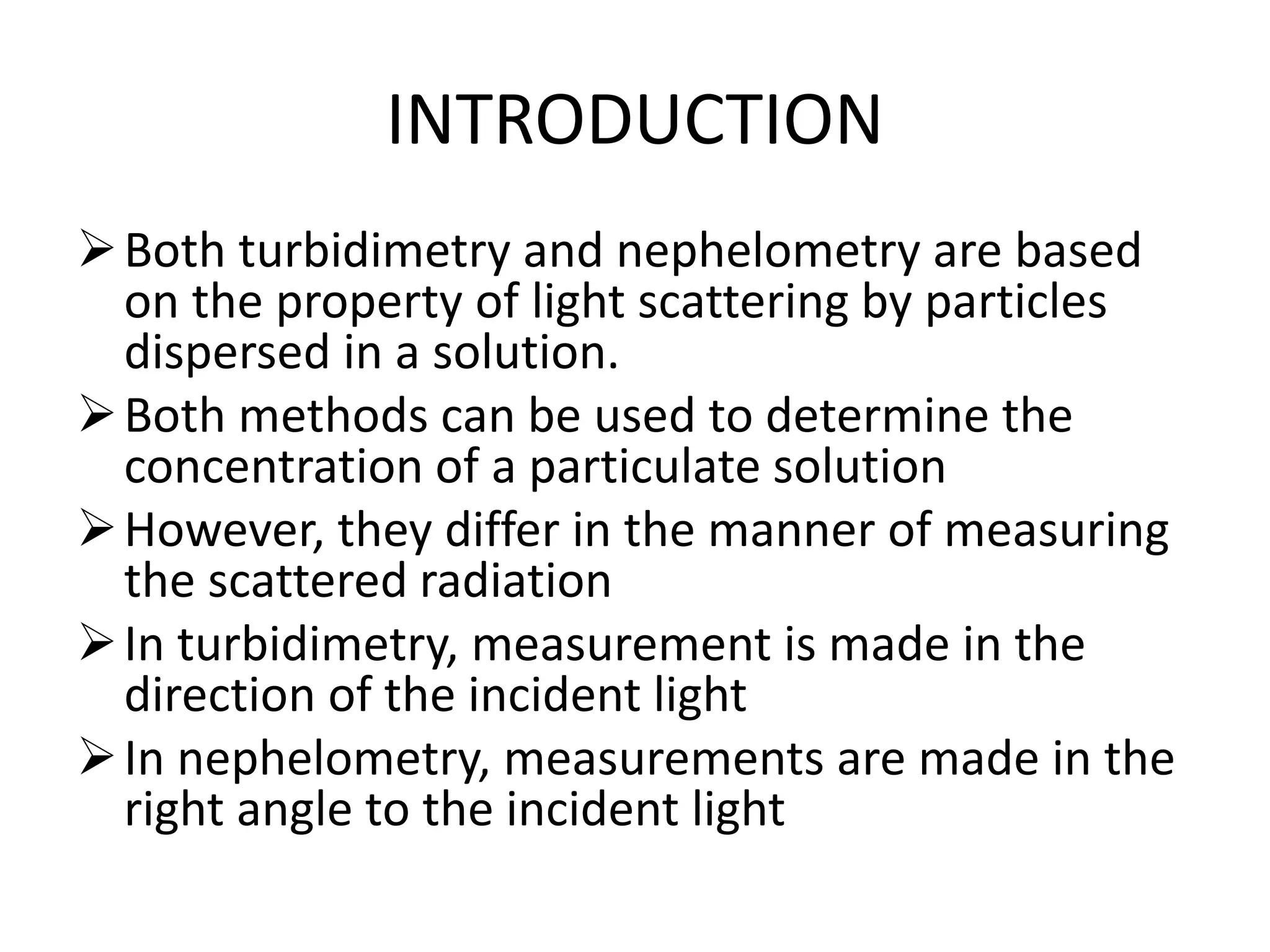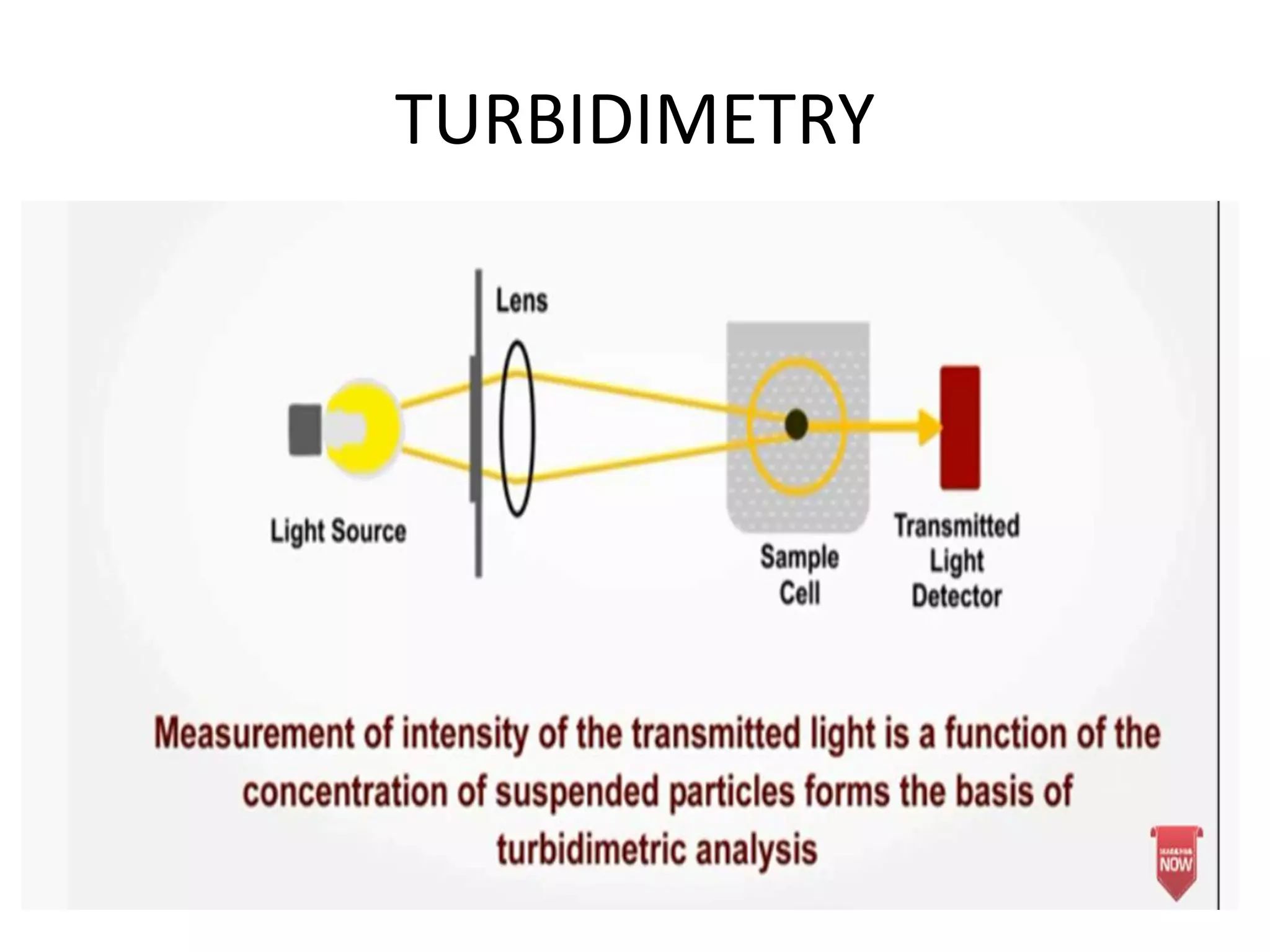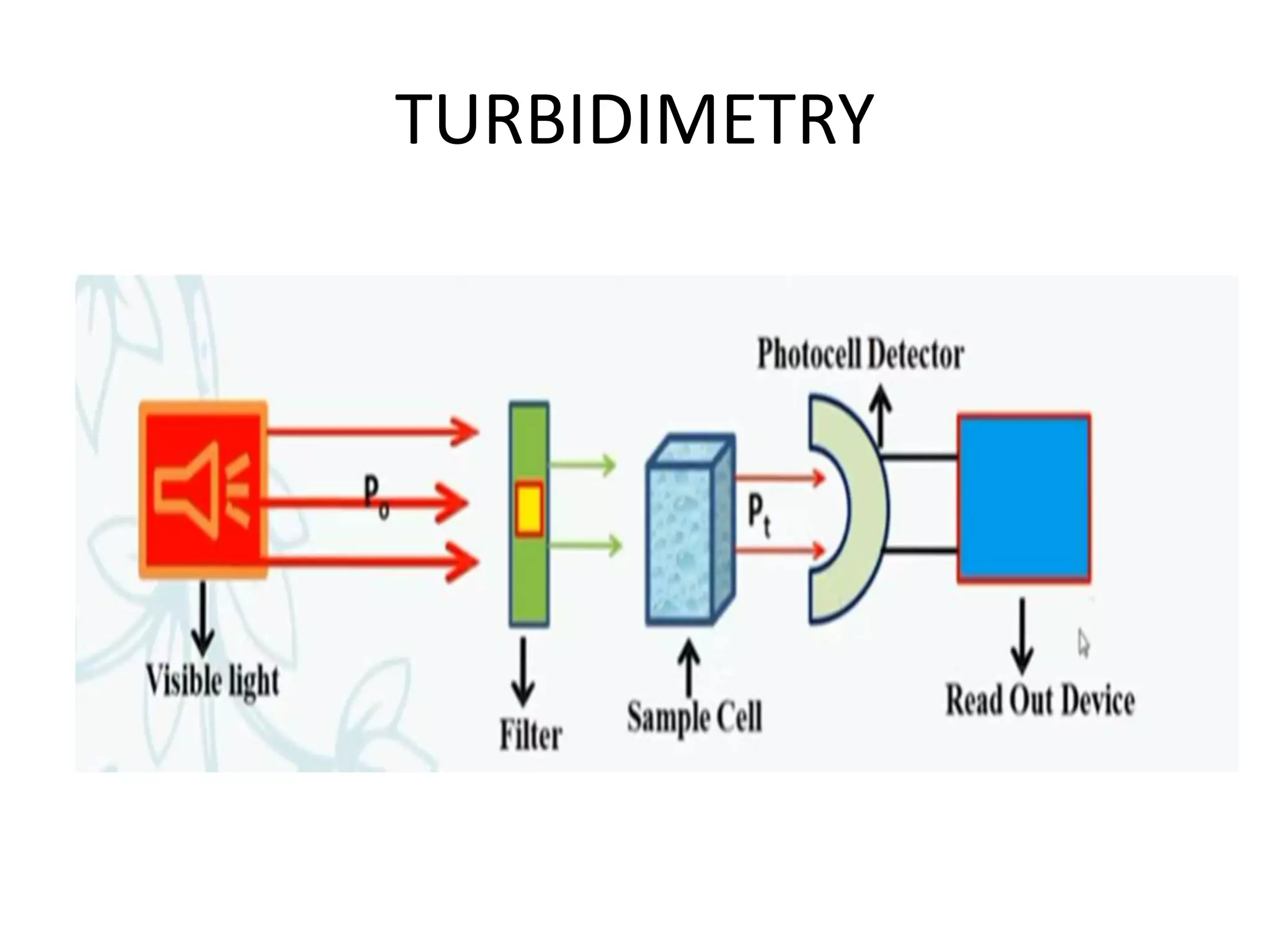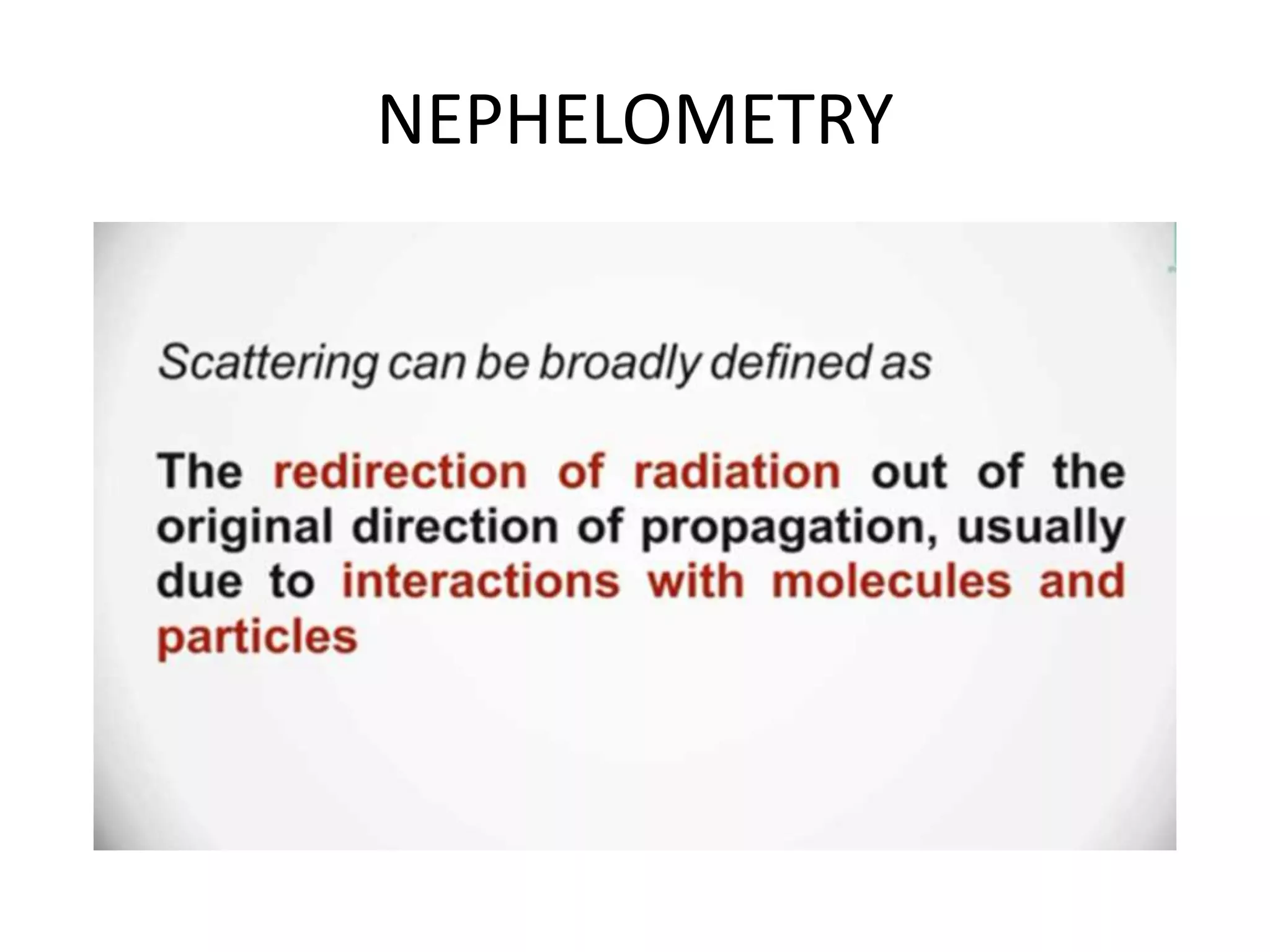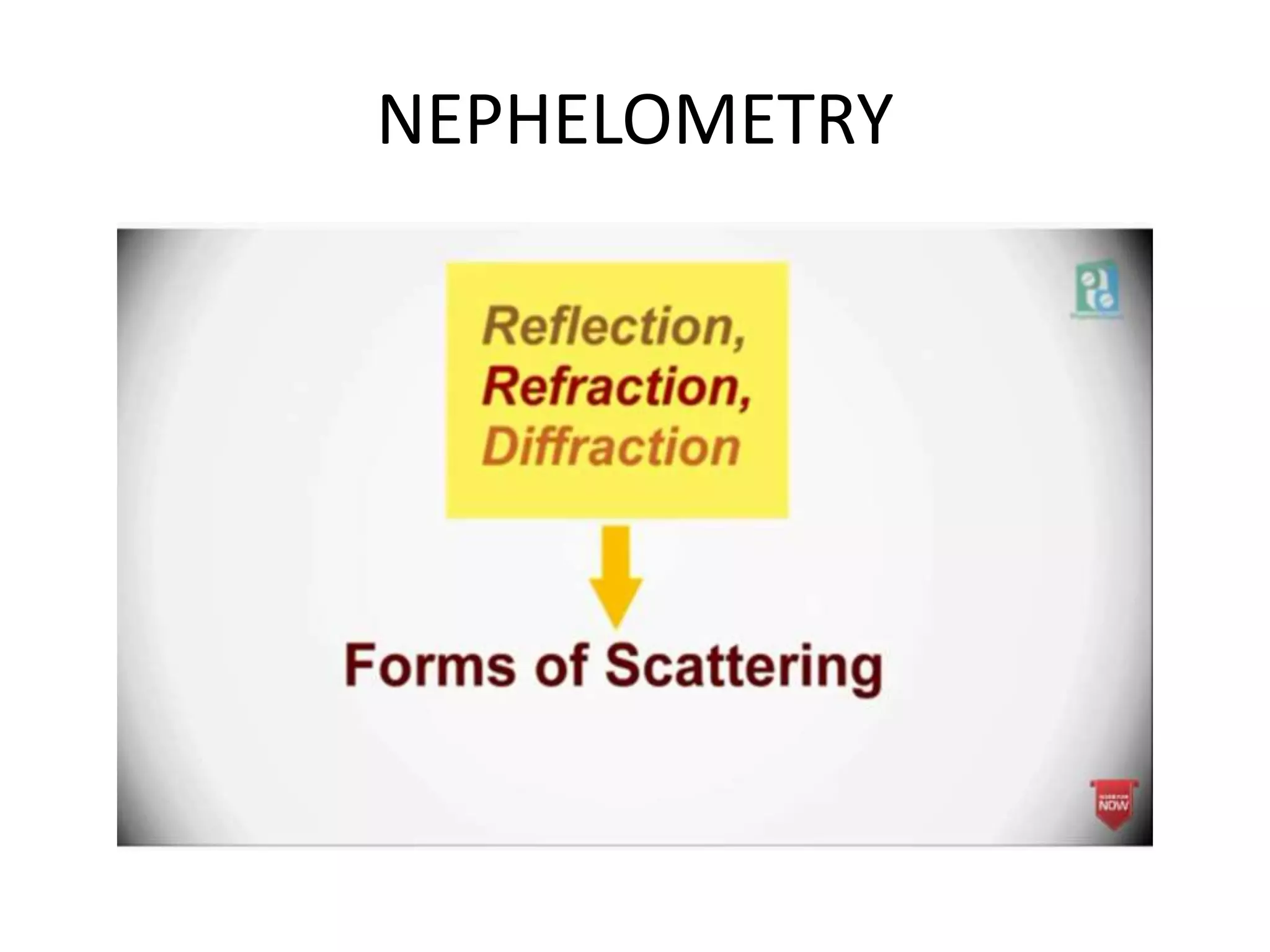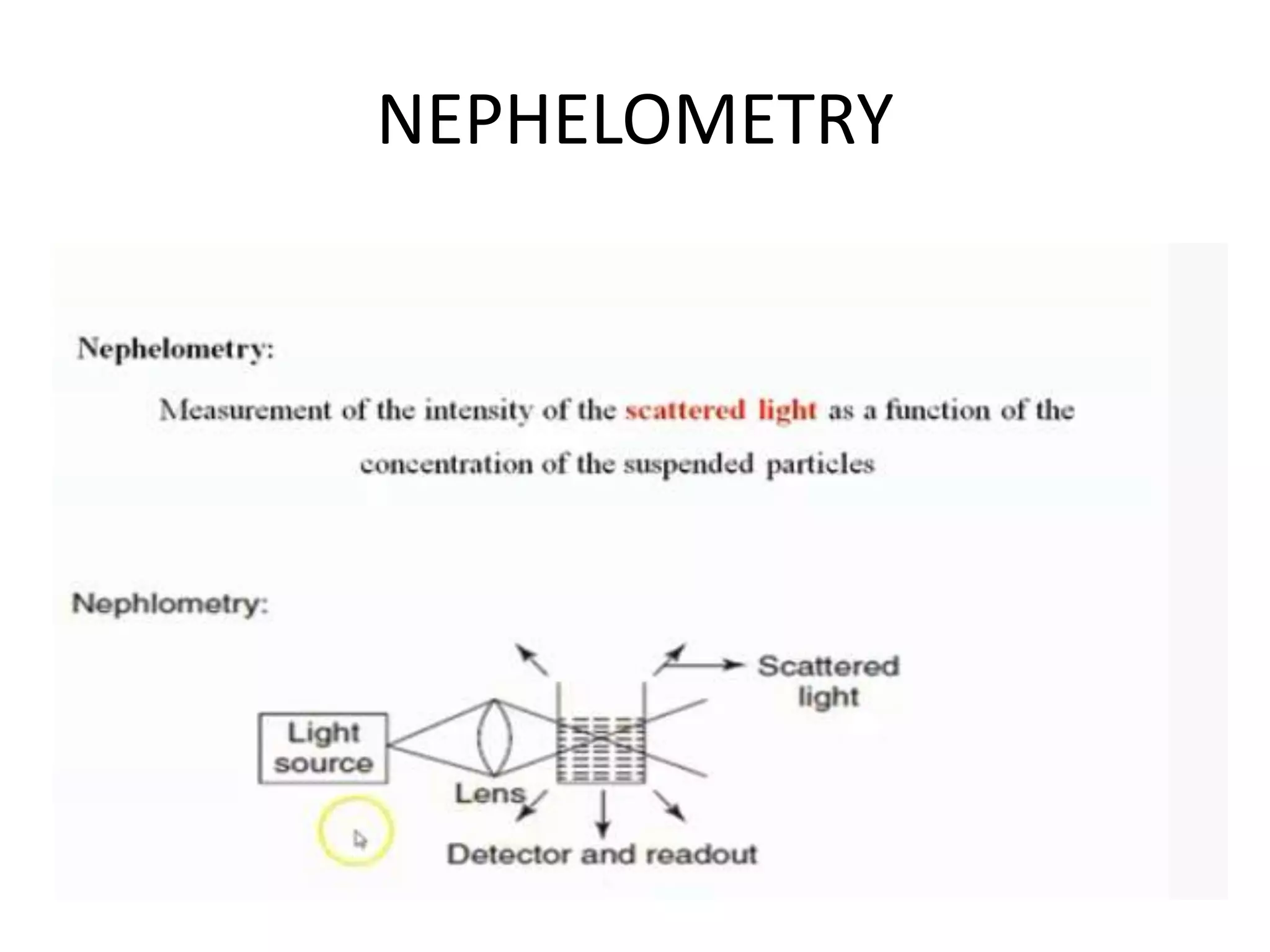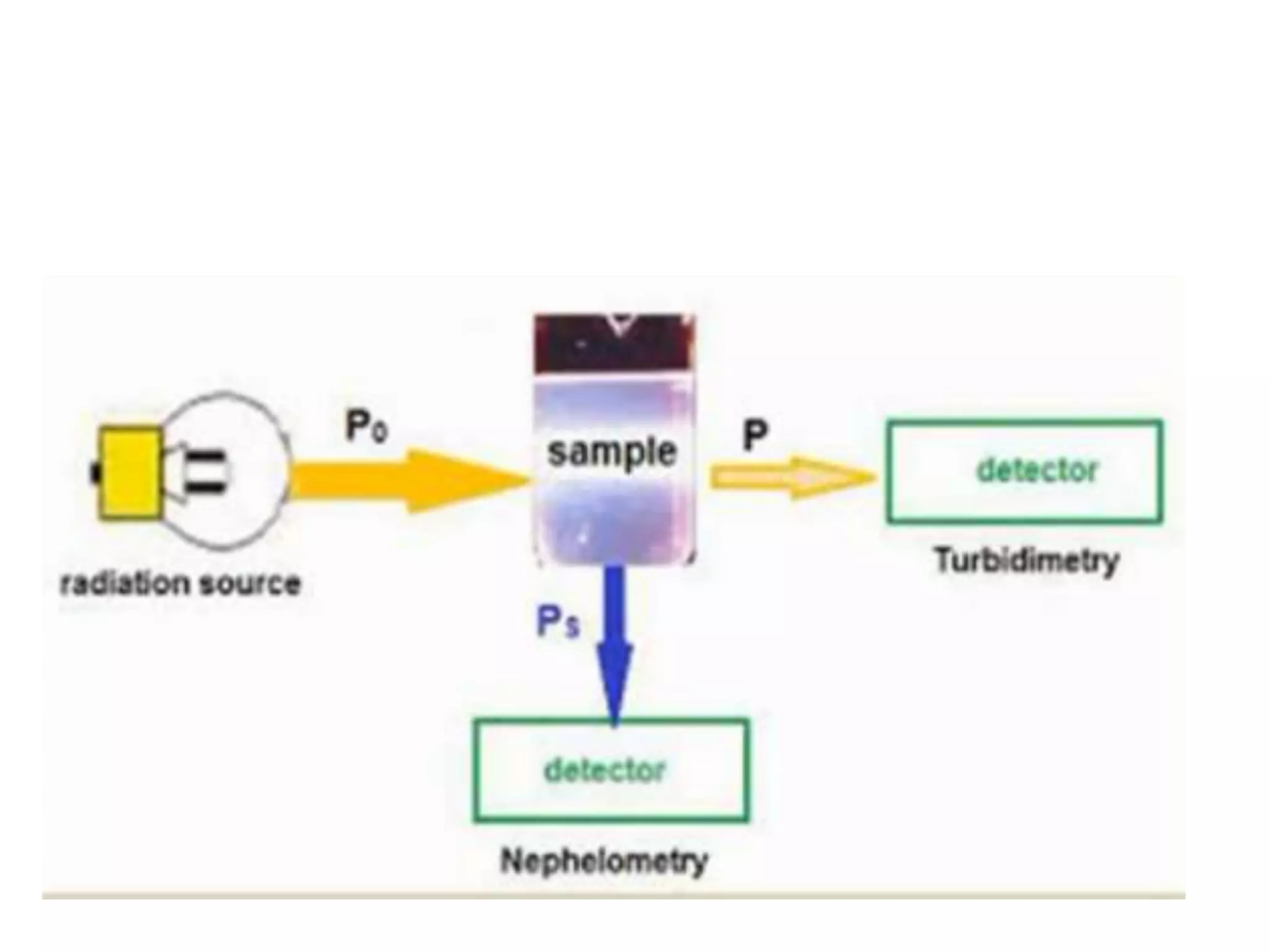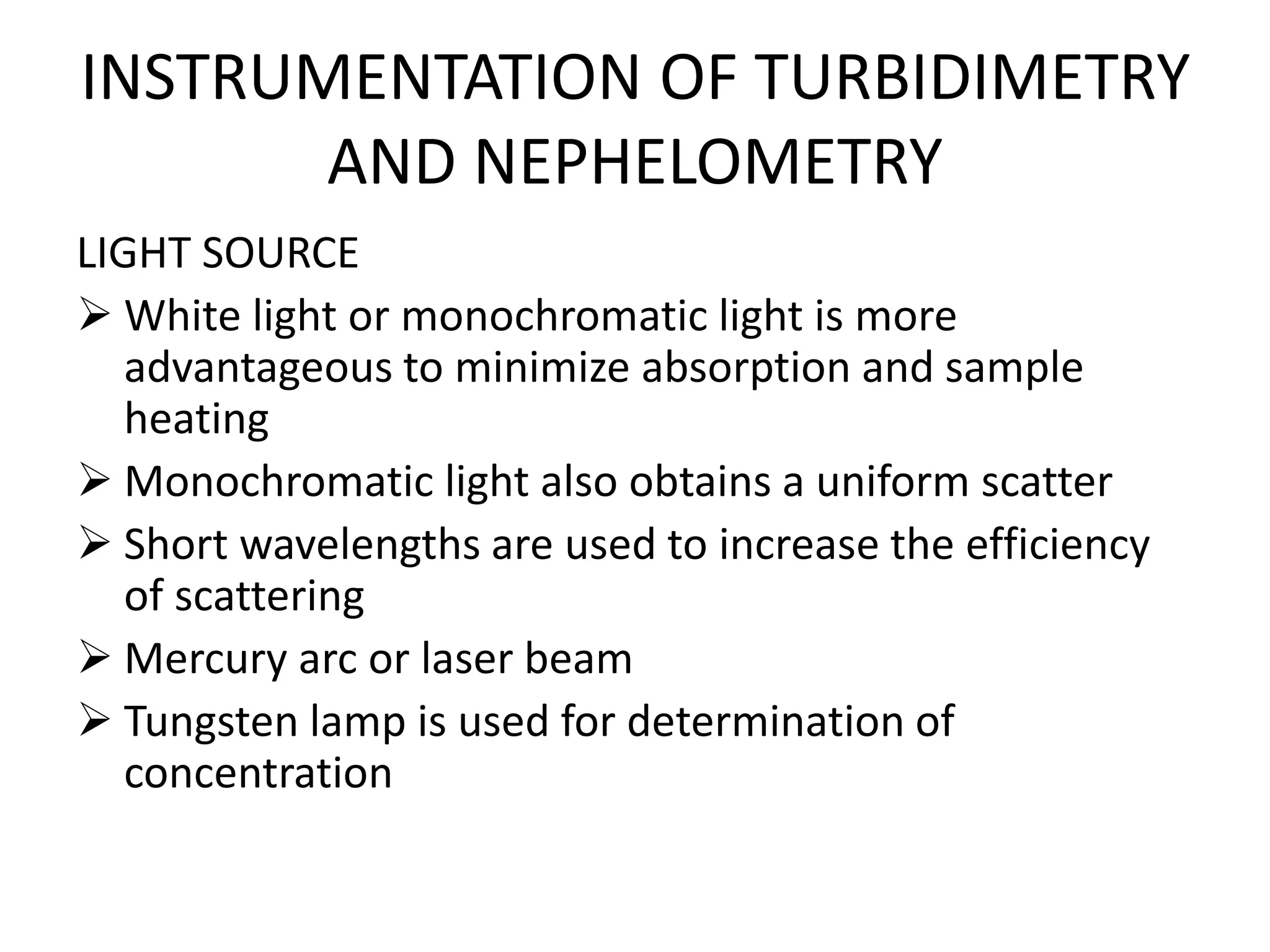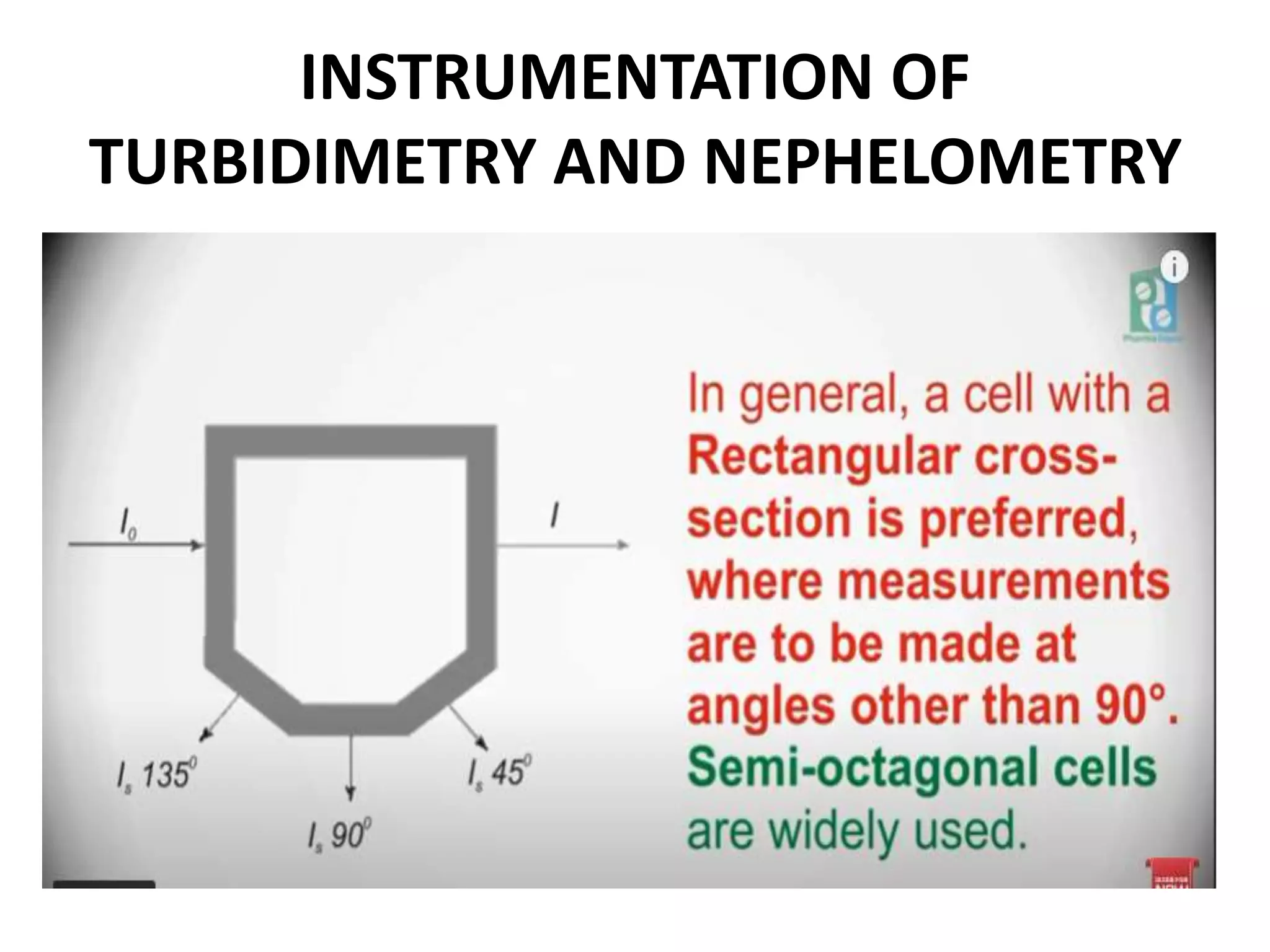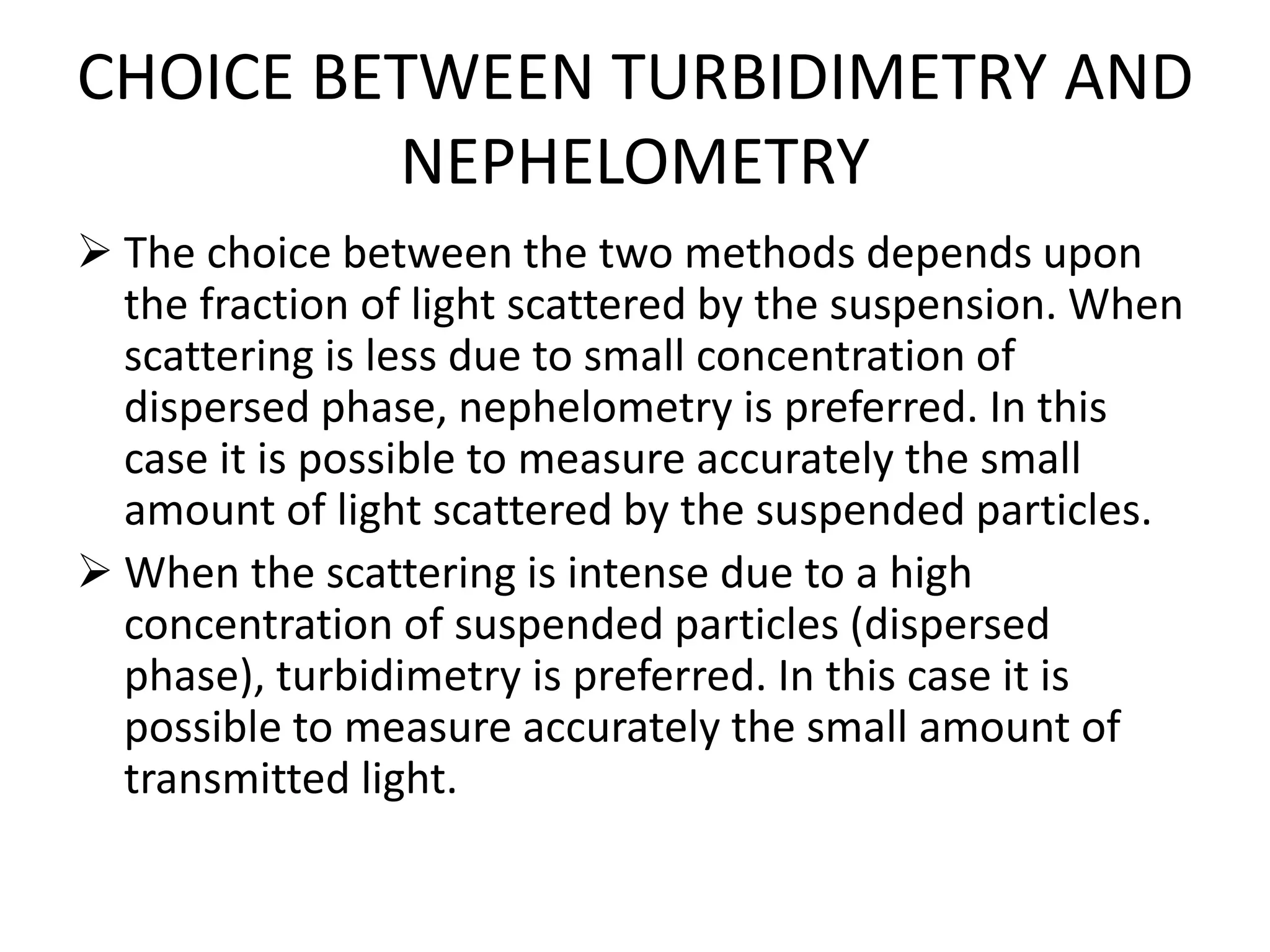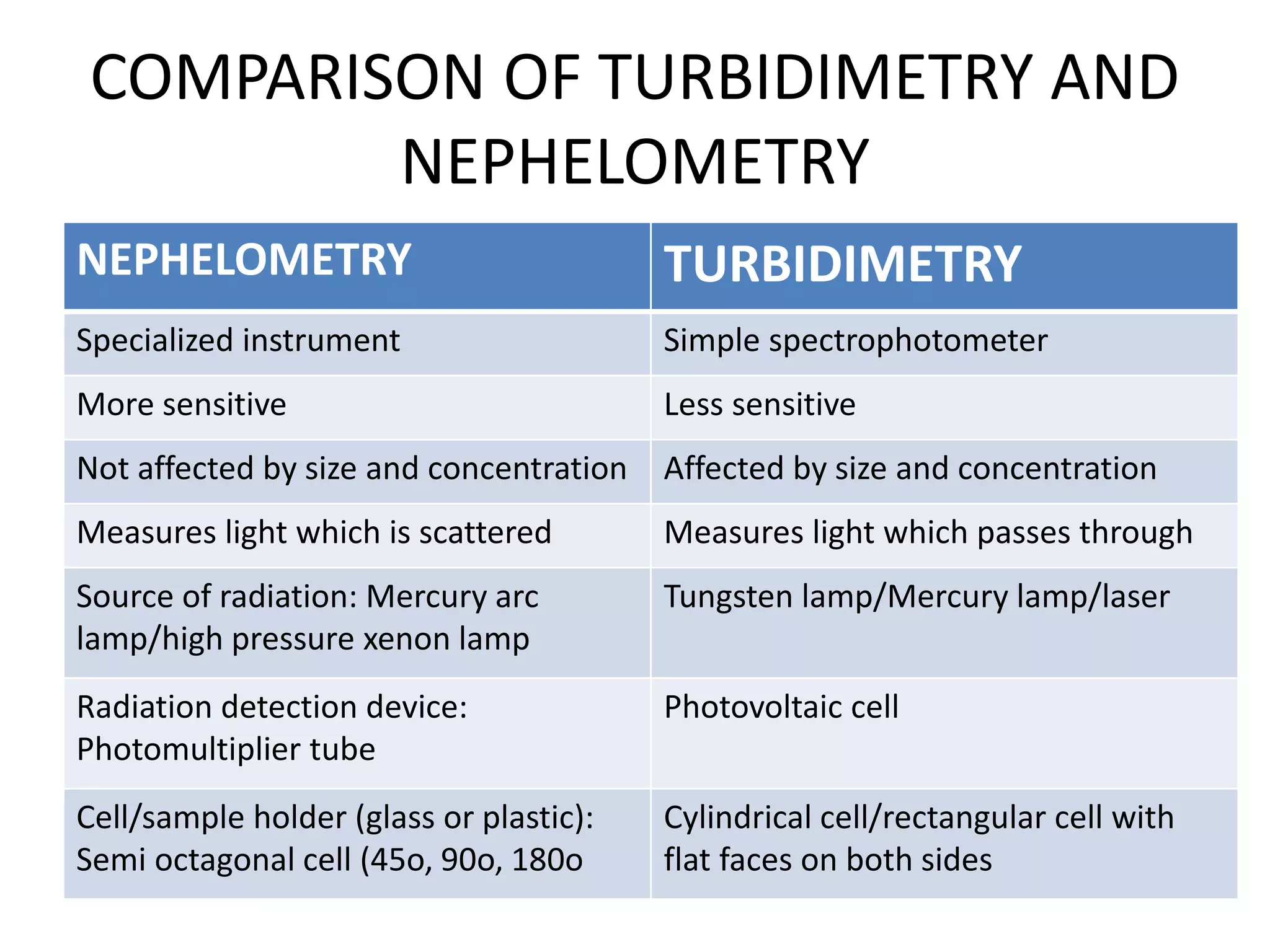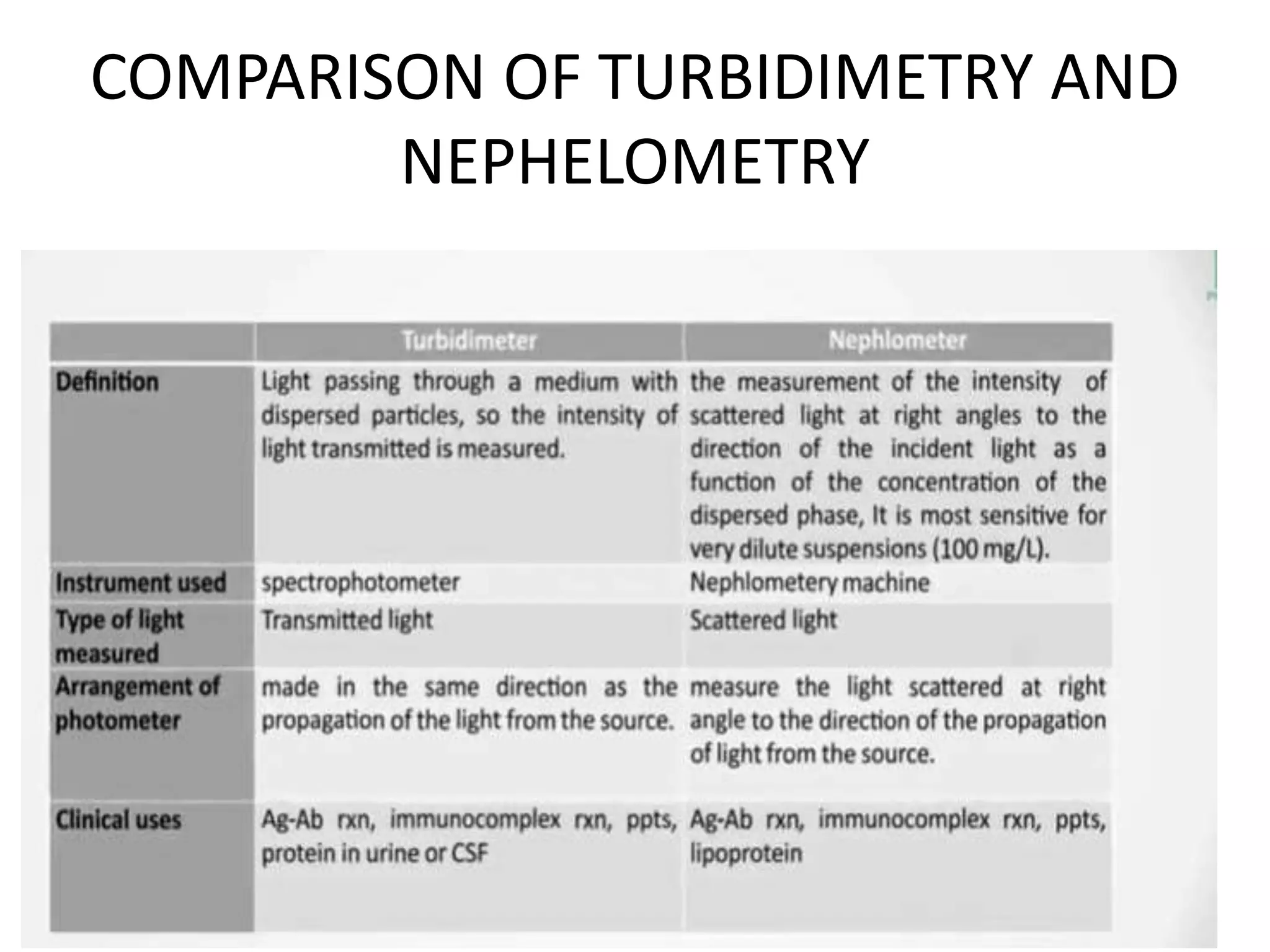This document discusses the principles and applications of nephelometry and turbidimetry. Both methods measure the scattering of light by particles in solution, but differ in how the scattered light is measured. Nephelometry measures scattered light at an angle, usually 90 degrees, to the incident light beam. Turbidimetry measures light transmitted through the solution in the direction of the incident beam. Factors that affect scattering include particle concentration, size, shape, wavelength of light, and refractive indices of particles and solvent. Applications include determining concentrations of substances like proteins, sulfate, and ammonia in biochemical and environmental analysis.

